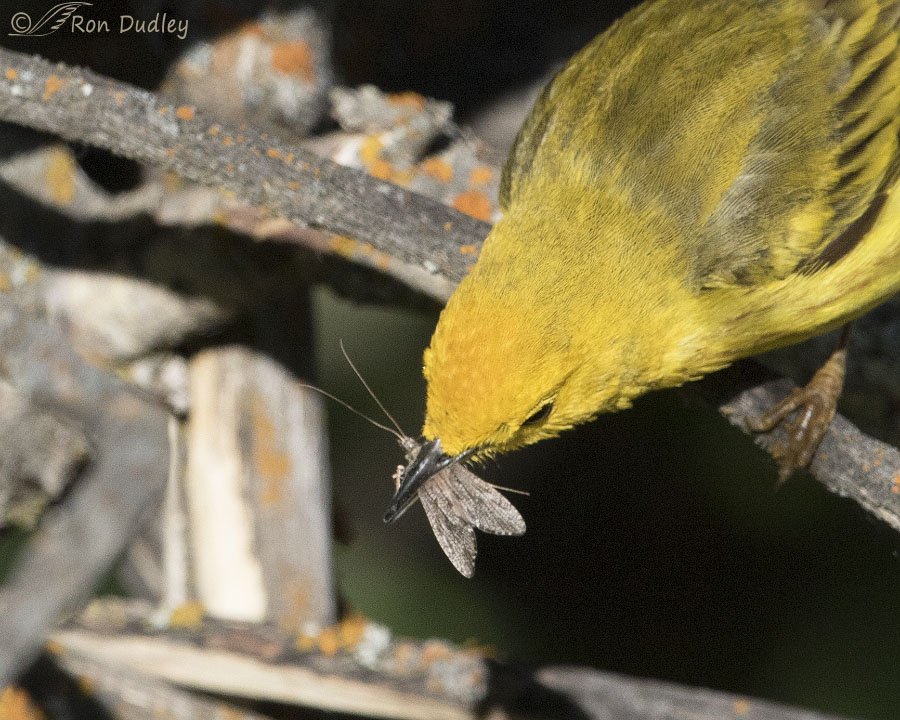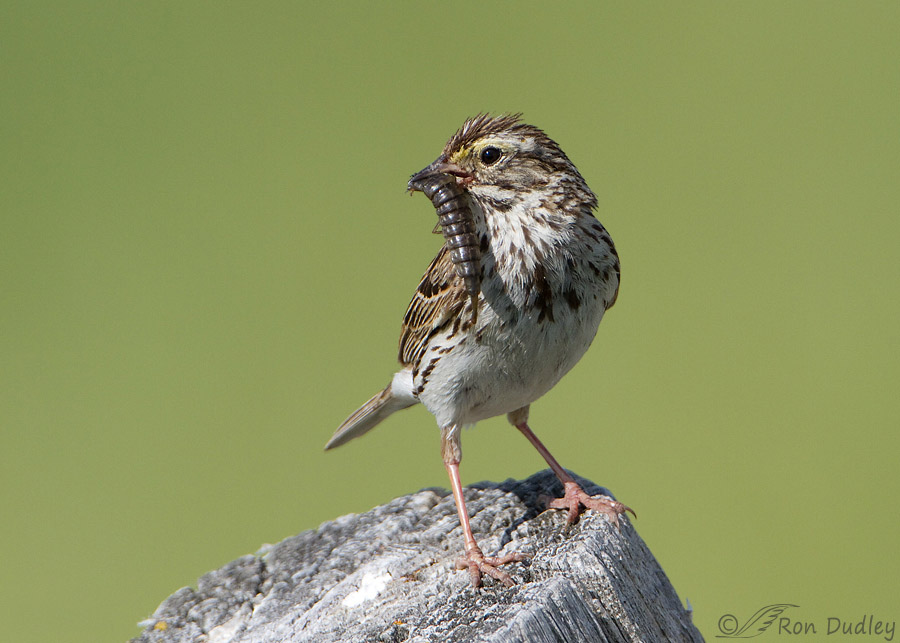And you don’t have to be an accomplished photographer to participate. If you photograph birds on any level you’re likely to eventually get some photos that would be helpful.
Yesterday’s edition of Feathered Photography included a couple of photos of a Red-naped Sapsucker with insects in its bill. In a comment on Facebook Meghann Matwichuk suggested that I use a link she provided and send those photos to Dr. Doug Tallamy and his colleagues at the University of Delaware for an ambitious crowd-source project they’ve begun. I checked out the link and became enthused by what I read.
Dr. Tallamy is requesting that bird photographers and birders throughout the country send him photos of birds with insects in their bill. He and his team of entomologists have embarked on a long-term research project to document which insects are eaten by which birds all over the US (especially during breeding season). Their primary concern is the “conservation and restoration of viable bird habitat. We can’t manage habitats for breeding birds without knowing what breeding birds eat while reproducing.” And he’s asking for our help
Dr. Tallamy provides a superb explanation as to why identification of the insect prey is so important on their website. He does a much better job of it than I ever could so I hope bird photographers will read it.
So yes, yesterday morning immediately after Meghann’s Facebook comment I used the form provided on their site to send them my photos of the sapsucker with insects in its bill.

And later yesterday morning I photographed this Yellow Warbler with an insect in its bill so I sent it to them soon after I arrived home.

This is an older photo I’m planning on sending to them soon – a Savannah Sparrow with eyes bigger than its stomach. And I’m sure I’ll be sending them more photos down the road.
But any photos you send don’t necessarily have to be this detailed. Even if they can’t see enough detail in the “bug” to ID it to exact species his entomologists will attempt to narrow it down to order, family or genus and that will be helpful too. Then they’ll feed the data back into their searchable database so the information can be used by others to conserve and restore viable bird habitat.
I strongly encourage anyone who ever takes photos of birds with insects in their bills to send them to Dr. Tallamy and his team using this link on the same site. I’ve bookmarked the site and plan to use it whenever I get an appropriate photo.
After all, bird photographers need subjects to photograph and this study will help birds.
Ron
Note: Though Dr. Tallamy specifically asks for bird photos with insects in their bills in two places on the site he broadens it out to any Arthropod species. So that would also include prey items like spiders, ticks, scorpions, millipedes, centipedes and even crayfish.


Thank you for this. I’ve just submitted a photo of a Great Crested Flycatcher with a dragonfly in its mouth. I also included a link to the video, if they might be interested: https://youtu.be/ImwbqG1tt-Y
This is interesting. does the Doctor and his team only want photos from America or would they be interested in Canadian locales as well?
Jane, I don’t know for sure but I strongly suspect they’d be interested in any from North America. Either would provide the data they need.
Where’s the link?
There’s 2 of them. One is underlined (and in bold) in the 4th paragraph and the other one is underlined in the 3rd paragraph under the last photo.
Brilliant idea. A win on all counts. I hope he is flooded with photos.
Smiling at the ‘eyes bigger than stomach’ line too. It was one my father often used.
EC, The Savannah Sparrows were eating lots of these large larvae in that area. Not sure how they managed them.
I have a lot of photos with birds eating different prey items (Sometimes other birds), but surprisingly I’ve only photographed a few with insect prey. Nonetheless, I have sent some of my photos there to help out. Thanks for the link!
Thank you for doing that, Xavier.
Thanks Ron – interesting information. I will look through my bird photos and send in what I have.
Everett Sanborn, Prescott AZ
The more the merrier, Everett! 🙂
Even though I’m not a bird photographer 😔 I do have friends that are. I’ll be sure to share this with them. Thanks for sharing this with us and Meghann sharing with you.
This is why I love this blog, we all care about the birds and want to see them thrive 😍
Yup, that’s the way we all feel, Diana!
Yay, citizen scientists! This is great and we can contribute a lot to the knowledge base. I’m sharing it around. Thank you for the heads up, Ron!
Share away, Susan. The more participants the better for birds.
Hi Ron,
Very interesting. I’ve always been attracted to taking photos of “Birds at Work”, so I have many shots of birds with insects to share. Thanks for posting this.
Good. I hope you send at least some of them in, John.
Fascinating! I never really thought of birds having different diets throughout the breeding season, but it totally makes sense. These are some pretty cool shots that you’re submitting to the database.
Diane, thank you for the book recommendation. Looks like the giant Liquid Amber in our front yard needs to go and it will take the entire yard with it. It’s a gorgeous and healthy tree, so it’s killing me to take it out, but the roots are now pushing on the foundation. I’m hoping to salvage a few things by transplanting to the back before-hand, but want to redo the yard in California natives and rock.
Marty, I’m glad you like those two shots. So do I.
Several others have recommended that book. It must be a good one.
I am sharing this with my local Audubon Society. Many thanks.
Wonderful! Thanks, Martha.
What a great project Dr. Tallamy is undertaking! I have really never thought about what insect or other larvae are high in protein and fat, though I guess some cultures know that (think Thai), because they eat such things. I don’t think I’ve ever taken a photo appropriate to the project, but I will certainly do what I can to participate. It would be great if they could tell you what that Sapsucker of yours was collecting.
Susan, I thought of exactly that while driving home from shooting this morning. After all, other similar sites such as the bird banding lab send folks information on the banded birds when folks report those birds. I’m going to try to find Dr. Tallamy’s contact info and make the suggestion that they report back the ID of the insect to the person who submitted the photo. Folks like us love that kind of info and I think it would greatly increase participation.
Edit: I found his email address so I sent him the suggestion.
Obviously I will send some of my images to Dr. Doug Tallamy!
Many thanks for this informative post and cluing us in. Much appreciated. This is exactly what citizen science should be all about.
Dick, I thought of you when I was composing this post, knowing what a fan you are of citizen science.
Hi Ron, thanks for the post. I wonder whether they would be interested in hummers at plastic feeders? No, probably not. Oops, not an insect. Groan! Sorry, just had to do it. Lame humor early in the am is just too much to pass up. Seriously, I got a Yellow Headed Blackbird with a dragon fly and a Pied Bill Grebe feeding her chicks some sort of aquatic green bug last week. I will make the submittal.
Good. Those photos sound perfect, Frank.
Cool!! Happy to help out. Thank you for the share.
Good. Send them what you have, Zaph!
Wonderful shots and great info Ron! Thanks for sharing!
Charlotte
Thanks, Charlotte.
Thànks for the link, Ron! I highly recommend his book BRINGING NATURE HOME for anyone who would like to learn about the importance of chosing native plants for their garden.
Others have mentioned that book too, Diane. It must be highly thought of by many.
Thanks for the information…I certainly will bookmark the page. A great way to help our feathered friends. 😊
Good. The more folks that bookmark it the better, Kathy.
How interesting! 🙂 Tend to think of habitat in broad terms of flora rather than the more detailed needs of “food” other than seeds/berries. Tend to “assume” the “bugs” come with. 😉 Thx for putting this “out there” Ron
Thank you, Judy. I hope they got lots of participants from around the country.
I have a phoebe nest above my head on my porch . I’m telling you she eats any insect that flies or crawls she is not particular .. praying mantis dragonflies horseflies moths houseflies list goes on…
🙂